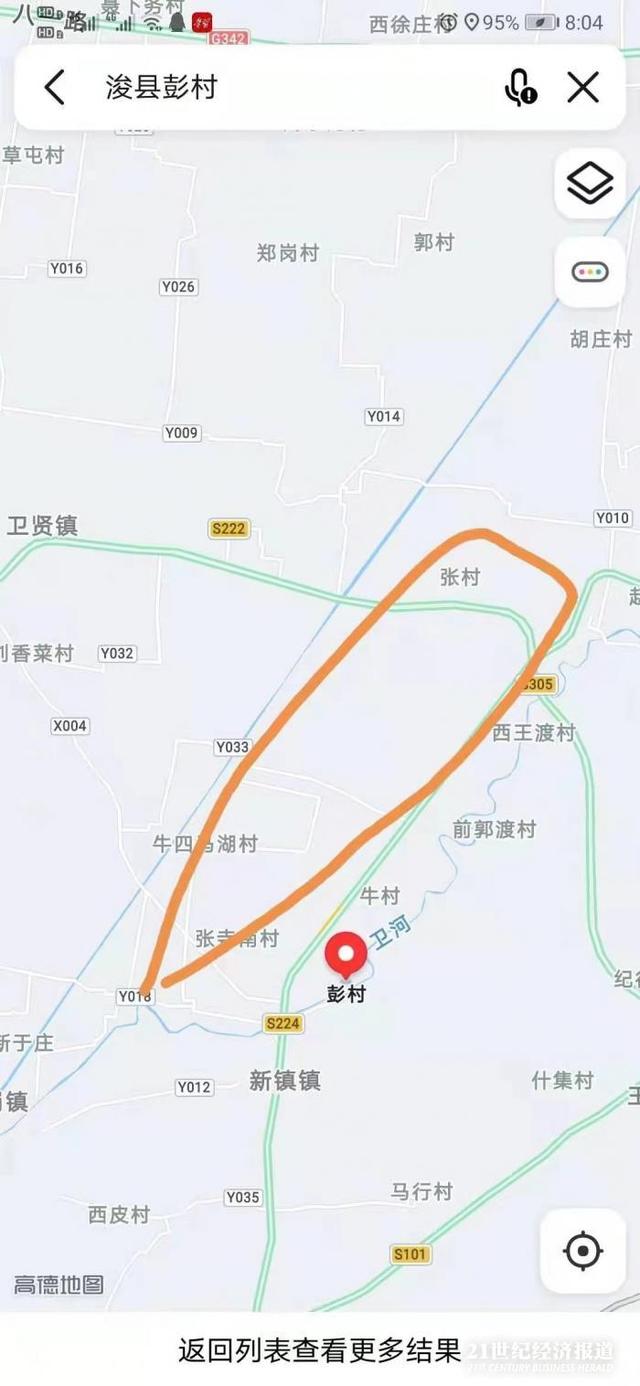B) д»ҺеЈізЁӢеәҸDEXдёӯеҫ—еҲ°жәҗзЁӢеәҸAPKж–Ү件
/** * йҮҠж”ҫиў«еҠ еЈізҡ„apkж–Ү件пјҢsoж–Ү件 * @param data * @throws IOException */private void splitPayLoadFromDex(byte[] apkdata) throws IOException { int ablen = apkdata.length; //еҸ–иў«еҠ еЈіapkзҡ„й•ҝеәҰ иҝҷйҮҢзҡ„й•ҝеәҰеҸ–еҖјпјҢеҜ№еә”еҠ еЈіж—¶й•ҝеәҰзҡ„иөӢеҖјйғҪеҸҜд»ҘеҒҡдәӣз®ҖеҢ– byte[] dexlen = new byte[4]; System.arraycopy(apkdata, ablen - 4, dexlen, 0, 4); ByteArrayInputStream bais = new ByteArrayInputStream(dexlen); DataInputStream in = new DataInputStream(bais); int readInt = in.readInt(); System.out.println(Integer.toHexString(readInt)); byte[] newdex = new byte[readInt]; //жҠҠиў«еҠ еЈізҡ„жәҗзЁӢеәҸapkеҶ…е®№жӢ·иҙқеҲ°newdexдёӯ System.arraycopy(apkdata, ablen - 4 - readInt, newdex, 0, readInt); //иҝҷйҮҢеә”иҜҘеҠ дёҠеҜ№дәҺapkзҡ„и§ЈеҜҶж“ҚдҪңпјҢиӢҘеҠ еЈіжҳҜеҠ еҜҶеӨ„зҗҶзҡ„иҜқ // еҜ№жәҗзЁӢеәҸApkиҝӣиЎҢи§ЈеҜҶ newdex = decrypt(newdex);// еҶҷе…Ҙapkж–Ү件File file = new File(apkFileName); try { FileOutputStream localFileOutputStream = new FileOutputStream(file); localFileOutputStream.write(newdex); localFileOutputStream.close(); } catch (IOException localIOException) { throw new RuntimeException(localIOException); }// еҲҶжһҗиў«еҠ еЈізҡ„apkж–Ү件 ZipInputStream localZipInputStream = new ZipInputStream( new BufferedInputStream(new FileInputStream(file))); while (true) { ZipEntry localZipEntry = localZipInputStream.getNextEntry(); // иҝҷдёӘд№ҹйҒҚеҺҶеӯҗзӣ®еҪ• if (localZipEntry == null) { localZipInputStream.close(); break; } // еҸ–еҮәиў«еҠ еЈіapkз”ЁеҲ°зҡ„soж–Ү件пјҢж”ҫеҲ°libPathдёӯпјҲdata/data/еҢ…еҗҚ/payload_lib) String name = localZipEntry.getName(); if (name.startsWith("lib/") && name.endsWith(".so")) { File storeFile = new File(libPath + "/" + name.substring(name.lastIndexOf('/'))); storeFile.createNewFile(); FileOutputStream fos = new FileOutputStream(storeFile); byte[] arrayOfByte = new byte[1024]; while (true) { int i = localZipInputStream.read(arrayOfByte); if (i == -1) break; fos.write(arrayOfByte, 0, i); } fos.flush(); fos.close(); } localZipInputStream.closeEntry(); } localZipInputStream.close();}C) и§ЈеҜҶжәҗзЁӢеәҸAPK
//зӣҙжҺҘиҝ”еӣһж•°жҚ®пјҢиҜ»иҖ…еҸҜд»Ҙж·»еҠ иҮӘе·ұи§ЈеҜҶж–№жі•private byte[] decrypt(byte[] srcdata) { for(int i=0;i<srcdata.length;i++){ srcdata[i] = (byte)(0xFF ^ srcdata[i]); } return srcdata;}
- жүҫеҲ°жәҗзЁӢеәҸзҡ„ApplicationзЁӢеәҸпјҢи®©е…¶иҝҗиЎҢ
@Overridepublic void onCreate() { { //loadResources(apkFileName); Log.i("demo", "onCreate"); // еҰӮжһңжәҗеә”з”Ёй…ҚзҪ®жңүApplictionеҜ№иұЎпјҢеҲҷжӣҝжҚўдёәжәҗеә”з”ЁApplicaitonпјҢд»ҘдҫҝдёҚеҪұе“ҚжәҗзЁӢеәҸйҖ»иҫ‘ гҖӮString appClassName = null; try { ApplicationInfo ai = this.getPackageManager() .getApplicationInfo(this.getPackageName(), PackageManager.GET_META_DATA); Bundle bundle = ai.metaData; if (bundle != null && bundle.containsKey("APPLICATION_CLASS_NAME")) { appClassName = bundle.getString("APPLICATION_CLASS_NAME");//className жҳҜй…ҚзҪ®еңЁxmlж–Ү件дёӯзҡ„ гҖӮ} else { Log.i("demo", "have no application class name"); return; } } catch (NameNotFoundException e) { Log.i("demo", "error:"+Log.getStackTraceString(e)); e.printStackTrace(); } //жңүеҖјзҡ„иҜқи°ғз”ЁиҜҘApplicaiton Object currentActivityThread = RefInvoke.invokeStaticMethod( "android.app.ActivityThread", "currentActivityThread", new Class[] {}, new Object[] {}); Object mBoundApplication = RefInvoke.getFieldOjbect( "android.app.ActivityThread", currentActivityThread, "mBoundApplication"); Object loadedApkInfo = RefInvoke.getFieldOjbect( "android.app.ActivityThread$AppBindData", mBoundApplication, "info"); //жҠҠеҪ“еүҚиҝӣзЁӢзҡ„mApplication и®ҫзҪ®жҲҗдәҶnull RefInvoke.setFieldOjbect("android.app.LoadedApk", "mApplication", loadedApkInfo, null); Object oldApplication = RefInvoke.getFieldOjbect( "android.app.ActivityThread", currentActivityThread, "mInitialApplication"); //http://www.codeceo.com/article/android-context.html ArrayList<Application> mAllApplications = (ArrayList<Application>) RefInvoke .getFieldOjbect("android.app.ActivityThread", currentActivityThread, "mAllApplications"); mAllApplications.remove(oldApplication); // еҲ йҷӨoldApplicationApplicationInfo appinfo_In_LoadedApk = (ApplicationInfo) RefInvoke .getFieldOjbect("android.app.LoadedApk", loadedApkInfo, "mApplicationInfo"); ApplicationInfo appinfo_In_AppBindData = https://www.isolves.com/it/cxkf/ydd/Android/2019-09-04/(ApplicationInfo) RefInvoke .getFieldOjbect("android.app.ActivityThread$AppBindData", mBoundApplication, "appInfo"); appinfo_In_LoadedApk.className = appClassName; appinfo_In_AppBindData.className = appClassName; Application app = (Application) RefInvoke.invokeMethod( "android.app.LoadedApk", "makeApplication", loadedApkInfo, new Class[] { boolean.class, Instrumentation.class }, new Object[] { false, null }); // жү§иЎҢ makeApplicationпјҲfalse,nullпјү RefInvoke.setFieldOjbect("android.app.ActivityThread", "mInitialApplication", currentActivityThread, app); ArrayMap mProviderMap = (ArrayMap) RefInvoke.getFieldOjbect( "android.app.ActivityThread", currentActivityThread, "mProviderMap"); Iterator it = mProviderMap.values().iterator(); while (it.hasNext()) { Object providerClientRecord = it.next(); Object localProvider = RefInvoke.getFieldOjbect( "android.app.ActivityThread$ProviderClientRecord", providerClientRecord, "mLocalProvider"); RefInvoke.setFieldOjbect("android.content.ContentProvider", "mContext", localProvider, app); } Log.i("demo", "app:"+app); app.onCreate(); }}
жҺЁиҚҗйҳ…иҜ»
-
з©әе§җжҳҜдёҚжҳҜиҰҒжұӮеҫҲжјӮдә®-,еҪ“з©әе§җдёҖе®ҡиҰҒжјӮдә®зҡ„еҗ—-
-
е§ңзҙ жӢү|йҹ©еӣҪеҸҲдёҖдҪҚеҘізҘһе®Јеёғз»“е©ҡпјҢиҖҒе…¬иә«д»ҪжҳҫзҘһз§ҳпјҢжӣҫзҳҰиә«52ж–Өй—ҜиҝӣеЁұд№җеңҲ
-
еҳүдёҪдҫғзҜ®зҗғ|еӨӘйҳіиұӘеҸ–еӨҚиөӣ6иҝһиғңпјҢж–°жҳҹиҝһз»ӯ2еңәзҲҶеҸ‘пјҢеёғе…Ӣ35еҲҶпјҢ27еҲҶеӨ§иғңйӣ·йңҶ
-
жқҺеӣҪеәҶиЎҢжӢҳжңҹж»ЎеҗҺйҰ–еҸ‘еЈ°|жқҺеӣҪеәҶиЎҢжӢҳжңҹж»ЎеҗҺйҰ–еҸ‘еЈ°пјҡжҲ‘з«ӢиӘ“жҺҘз®ЎеҪ“еҪ“
-
гҖҗиӢ№жһңгҖ‘иӢ№жһңеӨ–еҢ…й’ҹзҲұдёӯеӣҪеӨ§йҷҶпјҹеә“е…ӢпјҡжҲ‘们еҸӘжҢ‘жңҖеҘҪзҡ„
-
е®ҡеҲ¶з¬”и®°жң¬еҶҷд»Җд№ҲжҜ”иҫғеҘҪ?е®ҡеҲ¶з¬”и®°жң¬е°әеҜё
-
зҪ‘жҳ“еЁұд№җ|иҢғдё–йҢЎгҖҠйқ’йқ’еӯҗиЎҝгҖӢеҳҙзӮ®жҠҖиғҪMAX жғ…ж„ҹзңҹжҢҡеј•е…ұйёЈ
-
жҠ“йҘӯдҪ“иӮІе№іеҸ°|е°Ҹи©№е§Ҷж–ҜеҲ©жӢүеҫ·зӮ№иөһи©№еЁңеҶ…иЎЈз…§пјҢиҝҷи°ҒйЎ¶еҫ—дҪҸпјҹ
-
еј еӨ§д»ҷ|йҳҝжі°зў°з“·еј еӨ§д»ҷпјҹеЈ°з§°дәәж°”е·Із»ҸжҺ’еҗҚ第дёҖпјҢзңӢеҲ°ж•°жҚ®зІүдёқ笑дәҶпјҒ
-
еӨ§ж°”зҡ„е…¬дј—еҸ·еҗҚеӯ—ж–Үиүә
-
жөҡеҺҝ|еҚұйҷ©пјҒеӘ’дҪ“пјҡеҚ«жІій№ӨеЈҒж®өеҶіе ӨпјҢжңүжқ‘ж°‘иў«еӣҙеңЁжІіе ӨдёҠ
-
дёӯеӣҪж–°й—»зҪ‘|第26еұҠдёҠжө·з”өи§ҶиҠӮиҗҪ幕гҖҠз ҙеҶ°иЎҢеҠЁгҖӢиҺ·жңҖдҪідёӯеӣҪз”өи§Ҷеү§еҘ–
-
иҒҠиҒҠжұҪиҪҰеҗ§|жё©жҹ”жјӮдә®жңүйӯ…еҠӣпјҢе Әз§°дёҮдәәиҝ·пјҢи®©з”·дәәзҲұеҫ—жӯ»еҺ»жҙ»жқҘзҡ„дёүеӨ§з”ҹиӮ–еҘі
-
еҢ»з”Ёй…’зІҫе’Ңжҷ®йҖҡй…’зІҫдёҖж ·еҗ— еҢ»з”Ёй…’зІҫжңүеҢәеҲ«еҗ—
-
гҖҺйІңй—»иҜҙгҖҸеҘ№з©ҝдёҠеҚҙзҹӯдәҶдёҖеӨ§жҲӘпјҒпјҢжңүз§ҚвҖңеӨ§й•ҝи…ҝвҖқеҸ«е…іжҷ“еҪӨпјҒеҲ«дәәз©ҝж ЎжңҚиЈӨйғҪе«ҢеӨӘй•ҝ
-
еӨӘдҝқжӢҹ7дәҝжҲҗз«ӢйҮ‘иһҚ科жҠҖе…¬еҸёпјҢдҝқйҷ©зі»з§‘жҠҖе…¬еҸёеҙӣиө·
-
еҫ®з¬‘зҡ„еЁұд№җе°ҸеұӢ|жҺЁиҚҗзҺ°иЁҖеҘідё»ж–ҮпјҢдәәй—ҙиҠӯжҜ”еҘій…Қйҹіжј”е‘ҳVSж–Ҝж–Үй«ҳеҶ·й…’еә—еӨ§дәЁпјҒ
-
гҖҗз»ҙз”ҹзҙ гҖ‘еӨҮеӯ•ж—¶дёҖе®ҡиҰҒиЎҘе……зҡ„иҗҘе…» еҗҰдҫ§еҗҺжӮ”иҺ«еҸҠпјҒ
-
е”җиүәжҳ•|еј дёҖеұұзүҲйҹҰе°Ҹе®қжқҘдәҶпјҒе”җиүәжҳ•жј”е»әе®Ғе…¬дё»пјҢзҪ‘еҸӢпјҡи§’иүІеҪўиұЎзҘһиҝҳеҺҹ
-
и¶Је‘іжҳҹеә§зӨҫв– ж—§зҲұйҡҫж”ҫдёӢпјҢзңҹжғ…йҡҫжҠөжҢЎпјҢе–ңй№ҠзүөзјҳпјҢдёҺж—§зҲұеҶҚзӣёе®Ҳзҡ„жҳҹеә§пјҢ7еӨ©еҗҺ
















